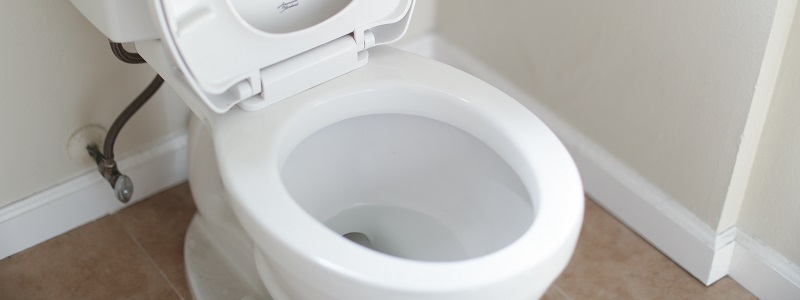Poopie – BM – Stool
Well, technically what I would like to write about here is called a bowel movement, feces, or a stool, but I think you will appreciate a little levity with your education.
You will see it get really descriptive later when it starts being called poopie. I’m sure you will relate.
You might think that this is the kind of thing that only obsessive hypochondriacs observe and think about, but BM’s can give lots of good information about your digestive health.
Here are some of the important things that I think you should pay attention to:
Blood on/in stool
This is always an abnormal state. Unless, of course, you are a menstruating woman, and the blood were drops from the menstrual flow. On second look, this should become obvious.
Blood streaked on outer surface usually indicates hemorrhoids or anal abnormalities, as this blood is coming in contact with the stool as it is expelled.
Blood present in the stool usually comes from higher in the colon and may be the first sign of bowel cancer. Blood from the stomach or duodenum (first part of the small intestine) will appear as bright or dark red if the bowel transit time is rapid. I urge you to take this sign seriously and evaluate for the cause of the bleed.
Undigested food
 Do you gulp your food down? If so, you are not chewing your food properly and your digestive system cannot make up for that.
Do you gulp your food down? If so, you are not chewing your food properly and your digestive system cannot make up for that.
This may indicate low stomach acid, called HCL and/or low pepsin (an enzyme in the stomach which begins protein breakdown). If the stomach acid is low, the digesting food moving through the digestive tract does not trigger the release of enzymes from the pancreas, so the food is not well digested. Thus, the food you ate may be recognizable in the toilet.
Mucous on stool
Translucent gelatinous mucus clinging to the surface of formed stool occurs when the stomach and intestines are irritated. This irritation can happen with
- food sensitivities
- inflammation of the pancreas
- inflammation of the colon
- spastic constipation from
- mucous colitis
- emotionally disturbed patients
- excessive straining at stool.
Loose stool
Loose but not watery stool is associated with mild intestinal irritation and malabsorption – the impaired absorption of nutrients from food due to inflammation of the digestive tract lining.
Hard stool
This is usually due to slow movement of the digesting food through the digestive tract, resulting in more water being absorbed with the end result of a dry, hard stool. The slow digestive movement can be caused by:
- low stomach acid (hypochlorhydria)
- lack of dietary fiber
- general dehydration
Floating stool
The stool may also be described as slippery or greasy looking. Possible causes:
- Fat malabsorption
- anxiety or irritation causing slowed digestive movement
- A high fiber diet.
Ribbon-shaped stool
A ribbon-like stool suggests that is came through a narrowed opening in the bowel. Possibilities for causes of this narrowing include:
- spastic bowel (muscles of the bowel spasming)
- rectal narrowing or stricture (pencil shaped),
- decreased elasticity of the bowel muscles
- partial obstruction, due to
- the uterus pushing into the bowel
- prostate inflammation and enlargement, which pushes on the bowel
- polyp, a growth from the bowel lining taking up space in the inside of the bowel
- tumor growing inside or outside the bowel
Small, round and hard stool
With habitual or moderate constipation, stools can come out as small round balls. This condition is called scybala. If the stool stays in the colon for a long time, parts of it can stay lining the colon wall and become impacted. The overflow of this comes out as a small, round and hard stool.
Brown Stool
It is a normal finding. But you knew that, didn’t you? But do you know why?
A bile pigment, bilirubin, which helps digest food, is acted upon by certain bacteria to break it down. The resulting product is brown colored stool due to the Sterobilin (urobilin), which is brown.
Dark brown stool
A dark brown stool can be a normal finding indicating good bile flow and elimination of fat-soluble toxins.
Eating lots of chocolate!
A consistently dark brown stool is associated with an excessively alkaline colon that may indicate an imbalance in the resident flora, meaning that some harmful bacteria are overgrowing the beneficial bacteria.
Yellow Stool
 This is usually seen with severe diarrhea.
This is usually seen with severe diarrhea.
It may be due to lack of intestinal flora, which may have been depleted from oral antibiotics.
It may also happen when there are excessive bile secretions due to over stimulation or irritation to the small intestine.
Black Stool
 This is usually a result of bleeding into upper GI tract. What happens is that when blood is digested, it turns from red to black. Possible causes of upper GI tract bleeding:
This is usually a result of bleeding into upper GI tract. What happens is that when blood is digested, it turns from red to black. Possible causes of upper GI tract bleeding:
- ulcer in either the stomach or small intestine
- Crohn’s disease – auto-immune destruction of the lining of the intestinal tract
- Colitis – inflammation of the small intestine
- cancer
Secondarily, it can be the result of use of
- drugs
- iron
- bismuth
- charcoal
- or a heavy meat diet.
Tan or clay colored stool
 This can be associated with a blockage of the common bile duct, so that the usual bile pigments which help digest cannot get into the intestinal tract to do their thing. This can also be due to the gall bladder not doing its job to get the bile out.
This can be associated with a blockage of the common bile duct, so that the usual bile pigments which help digest cannot get into the intestinal tract to do their thing. This can also be due to the gall bladder not doing its job to get the bile out.
When the bile acid cholic acid is deficient, the stool will be pale and greasy, since fats are not emulsified and digested.
If the pancreas does not make and release enough digestive enzymes, the food is not digested, and neither is the bilirubin which makes the stool brown.
Offensive odor of stool
Indole and Skatole, intestinal toxins formed from intestinal putrefaction and fermentation by bacteria, are primarily responsible for odor.
If the stool usually has an offensive odor then consider that it may be due to
- malabsorption
- food decay
- dysbiosis
If the stool is occasionally offensive then consider the same thing:
- intermittent malabsorption
- with food decay
- and dysbiosis.
Ghost Poopie
The kind where you feel the poopie come out, but there is no poopie in the toilet.
Clean Poopie
The kind where you poopie it out, see it in the toilet, but there is nothing on the toilet paper.
Wet Poopie
The kind where you wipe your butt 50 times and it still feels unwiped, so you have to put some toilet paper between your butt and underwear so you won’t ruin them with a stain.
Second Wave Poopie
This happens when you’re done Poopie-ing and you’ve pulled up your pants to your knees, and you realize that you have to Poopie some more.
Pop-A-Vein-In-Your-Forehead-Poopie
The kind where you strain so much to get it out, you practically have a stroke.
Gassy Poopie
It’s so noisy, everyone within earshot is laughing
Drinker Poopie
The kind of Poopie you have the morning after a long night of drinking. Its most noticeable trait is the skid marks on the bottom of the toilet.
Lincoln Log Poopie
The kind of Poopie that is so huge you’re afraid to flush without first breaking it into little pieces with the toilet brush.
Corn Poopie
Self-explanatory.
Gee-I-Wish-I-Could-Poopie Poopie
The kind where you want to Poopie but all you do is sit on the toilet and fart a few times.
Spinal Tap Poopie
That’s where it hurts so badly coming out, you would swear it was leaving you sideways.
Wet Cheeks Poopie (The Power Dump)
The kind that comes out of your butt so fast, your butt gets splashed with water.
Liquid Poopie
The kind where yellowish-brown liquid shoots out your butt and splashes all over the toilet bowl.
Mexican Poopie
It smells so bad your nose burns.
The Surprise Poopie
You’re not even at the toilet because you are sure you’re about to fart, but oops…….a Poopie!!!
The Dangling Poopie
This Poopie refuses to drop into the toilet even though you know you are done Poopie-ing it. You just pray that a shake or two will cut it loose.
Thanks to a bathroom at Arcosanti years ago and the internet now for the Poopie List.






